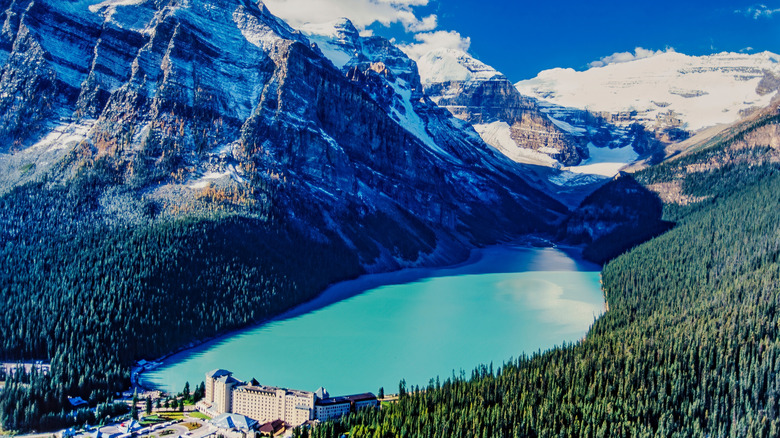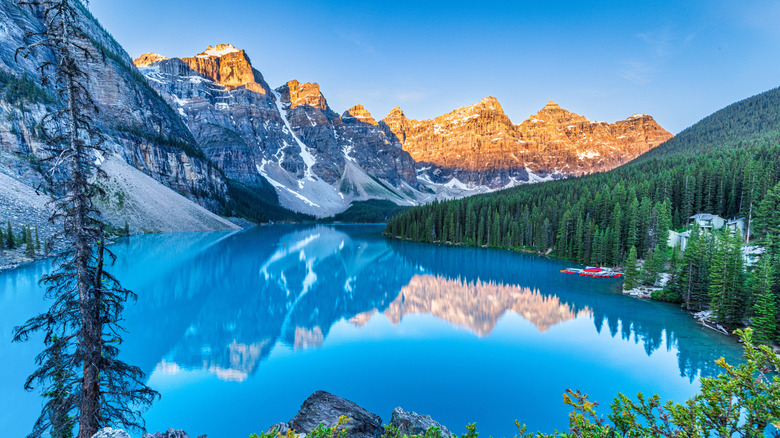What could be more distinctly American than a summer day spent by the water? It seems like every person is near a remarkable body of water, and with over 100,000 lakes, one might expect the U.S. to be at the forefront of lake-rich nations. However, another well-known travel spot holds that distinction. Canada, the U.S.’s northern neighbor, has eight times as many lakes, earning it the title of the country with the most lakes in the world and a dream destination for those who love water.
Canada boasts an impressive 879,800 lakes, surpassing Russia by more than 600,000. In fact, the country known for its maple syrup holds more lakes than the entire rest of the world combined. Approximately 62% of the Earth’s 1.42 million lakes, which are larger than 25 acres, are located in Canada. When including smaller lakes, there are at least 117 million lakes globally, with about 2 million of them found in Canada.
Of course, Canada is already famous for its amazing natural attractions (perhaps less well-known is thewild forested area of Canada’s “Sasquatch Capital,”but hey, there’s something for everyone. Its towering mountains, striking coastal areas, and enchanting forests are well-known worldwide. However, water enthusiasts of all kinds have nearly endless options in Canada. From regular summer activities to winter fun on frozen lakes, the opportunities are limitless.
Read more: Top Beaches Across Australia, As Vouched By Travelers
What Are the Top Lakes in the Country with the Most Lakes?

Canada is a vast and largely untamed nation. Due to this, many of its lakes remain relatively unknown, with several located in isolated areas that are difficult to access through conventional means. However, there are some remarkable options available throughout the year, whether you’re seeking a relaxing summer destination or a place for thrilling outdoor activities. No matter where you go, always make sure to take the necessary safety measures while on the water.
Lake Louise, located among the mountains above Banff, it is recognized as Canada’s most scenic lakeand unquestionably the most famous of them all. The breathtaking glacial lake’s turquoise waters are globally recognized and have been for more than a hundred years. The lake serves as a beautiful centerpiece for skiers, hikers, and anyone who loves the outdoors throughout the year. Due to its glacial formation, the water stays chilly, even during the summer months. However, you can still see people enjoying canoes and kayaks. In the winter, the lake freezes, offering a remarkable spot for ice skating. It’s important to confirm that the lake is safe for this activity first, so ask locals before taking out your skates. Regrettably, the cold temperature restricts the number of fish that can inhabit the lake, so don’t expect an abundance of catches.
Not as widely recognized is the remarkably distinctive Manicouagan Reservoir. Situated in Central Quebec, this unusual lake, which spans 40 miles in width, was created at least 214 million years ago due to a meteor impact on Earth. The lake was further shaped by the construction of a dam that flooded several smaller lakes surrounding the crater’s edge. In contrast to Lake Louise, this area is rich in fish. When winter brings freezing temperatures, it becomes an otherworldly spot for snowshoeing and ice fishing, while summer offers ideal conditions for paddleboarding and canoeing. Don’t assume it will be simple to kayak all the way around. The crater lake is so vast that you’ll never sense the turns.
How to Organize a Journey to the Country with the Most Lakes on Earth

Reaching Canada is straightforward. However, locating some of the nation’s most secluded lakes can be challenging. Naturally, many of the country’s well-known attractions are easily reachable. The first one mentioned earlier, Lake Louise, is situated in one of the most visited tourist areas in the country. You will still need to fly into a hub such as Calgary and then either drive or use public transportation. This journey typically takes about two hours and will provide access to several stunning lakes in addition to Lake Louise.
To reach one of the more secluded locations, such as the Manicouagan Crater Lake, you must fly into a place like Quebec City and then take an adventurous nine-hour drive across the Canadian landscape. The journey itself is worth it. Several of the lakes are even more isolated, with minimal or no roads, public transportation, or flight options. Make sure to review the details of how to get there before starting such a trip.
If you’re being economical,This lesser-known Canadian airline offers affordable fares.Both Calgary and Quebec offer great options. You’ll appreciate it, as hotel prices and other lodging costs in various areas of Canada can increase significantly. Expenses for activities on the lake can also differ greatly. Renting a canoe at Lake Louise may be more expensive compared to a more isolated lake, so consider this while making your plans.
Eager to uncover more secret treasures and professional travel advice?Sign up for our free email newsletterfor entry to the globe’s most closely guarded travel insights.
Read the original article on Islands.



